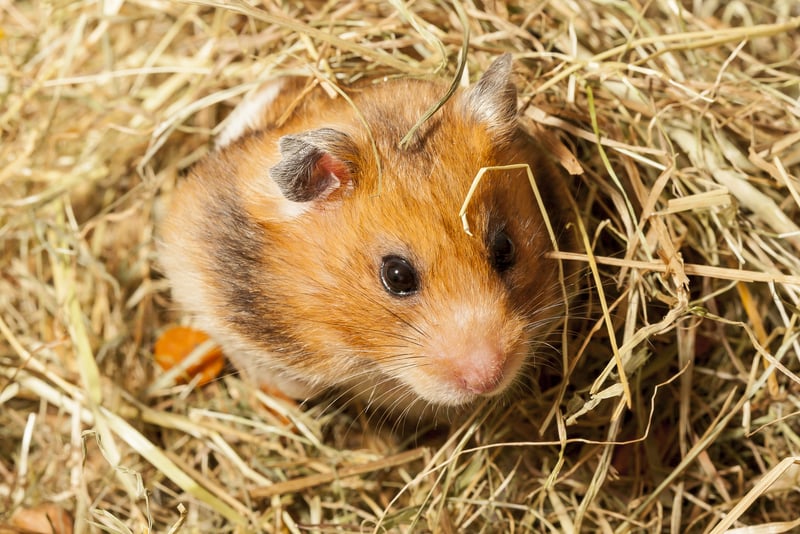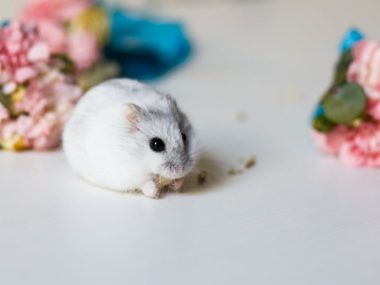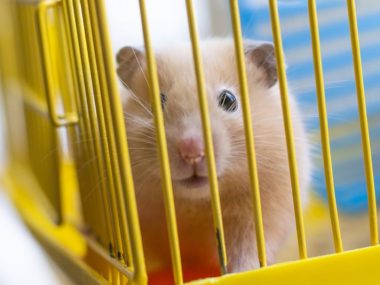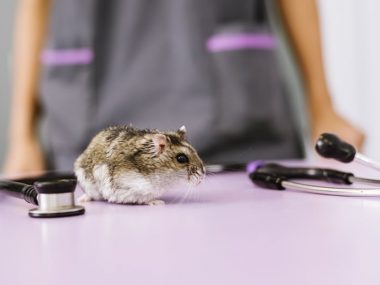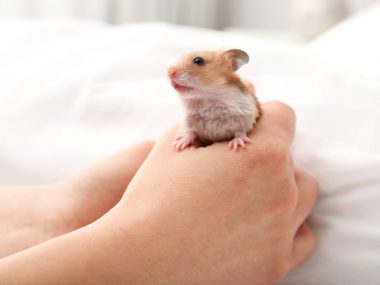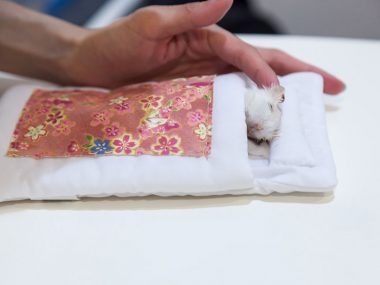Hay is a versatile addition to any hamster cage. It can be used for bedding, nesting, burrowing, and even munching as a healthy snack! But not all types of hay are the same, and what may be perfect for a horse or goat may not be suitable for your pampered little pocket-pal.
Hamsters don’t need hay if they have a good quality balanced diet and suitable bedding. Hay doesn’t have much nutritional value, but providing hamster-friendly hay can encourage foraging and helps maintain dental health. Hay can be added as a snack, bedding, or as environmental enrichment.
Unlike guinea pigs, hamsters don’t need to eat hay to stay healthy. So is it good for hamsters, and is it worth putting hay in your hamster’s cage? Let’s find out and go through which types of hay are safe for your hamster.
Table of Contents
Do Hamsters Need Hay?
Before the days of commercially available, nutritionally balanced staple hamster food and loads of choices about bedding, hay was an obvious choice for hamster cages. According to Smithsonian Magazine, the first Syrian hamsters in captivity were caught in 1930. After plenty of mishaps with the first batch, all future domestic hamsters resulted from someone finally filling the breeding chamber with hay.
However, since then, hamsters have (of course!) become popular pets, and there are loads of options for pet owners about everything from diet to toys and burrowing material. As long as all their dietary and environmental requirements are met, hay is not specifically required.
Is Hay Safe For Hamsters?
Some types of hay are safe for hamsters, while others are not. A hamster cannot avoid sharp spikey bits of grass, mold, or contaminants in a cage situation. Never use straw – it is not the same as hay and is too hard to be used in a hamster cage.
Another consideration when choosing hay that is safe for hamsters is whether or not it is clean. That’s why it is important never to use any dry grass you find lying outside to put in your hammie’s cage.
Let’s go through some types of hay that are perfect for your hamster:
- Timothy grass – This hay is readily available at most pet shops and is ideal for hamsters. This hay variety is also best for anyone with Dwarf hamsters to nibble on since they are prone to diabetes. Shop online for boxes of clean Timothy Hay that your hamster will love.
- Orchard Grass Hay – A soft, high-fiber, sweet-smelling hay that can be offered to hamsters to enrich their environment. Oxbow Store has a range of orchard grass blends, including Orchard grass hay that is ideal for hamsters. They will love using it for nesting, and it’s also excellent for dental health.
- Alfalfa – This is a protein and calcium-rich type of hay that should only be given occasionally as a treat or to very young hamsters, lactating mothers, or hammies that need to put on weight. Alfalfa is not recommended for hammies that need to slim down!
Is Hay Good For Hamsters?
Hay can be a valuable source of fiber in a hamster’s diet. A study published by the National Library of Medicine found that hamsters that received alfalfa in addition to a staple diet high in sugar had better survival rates.
The inclusion of hay in your hamster’s environment is much less about adding nutritional value than it is about enrichment. Hay should never replace staple hamster pellets, fresh fruit, vegetables, and occasional healthy treats and should only be given as an additional item.
However, hay and wooden chew toys are extremely useful for maintaining good dental health. Hamster incisors never stop growing, so providing roughage like hay can help to keep their teeth in check. If you want to include hay in your hamster’s environment without the mess, hay cubes or hay chew sticks are great alternatives.
Do Hamsters Eat Hay?
Most hamsters eat small amounts of hay, especially when you have just added it to the cage and it smells fresh and sweet. Even if they don’t actually eat it, it is beneficial as most hamsters nibble and chew on it, which helps to keep their teeth in good condition.
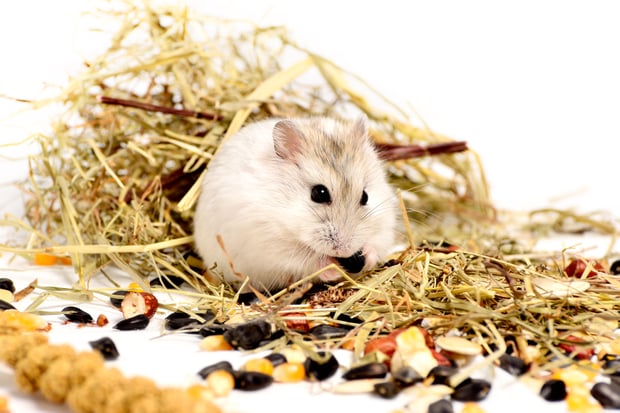
Hay can be offered a few times a week as a treat, but it is not an essential dietary requirement for hamsters. They enjoy foraging about in hay, and adding some hay with a small treat inside is a great way to add environmental stimulation.
TOP TIP: For a fun, inexpensive toy, wrap some hamster-friendly hay inside small brown paper bags and place them in your hamster’s cage. Your hamster will love chewing open the bag to reach the bounty inside. It will have fun retrieving the hay and will likely take bits to line its nest.
Can Hamsters Have Hay As Bedding?
Hay on its own is not good bedding material for hamsters. Although your hamster may enjoy using bits of soft hay to line its nest, it is not absorbent enough to soak up urine and poop efficiently, which can lead to skin infections. Besides staying wet, it also doesn’t offer much in terms of odor control.
Research has shown that hamsters prefer fluffy bedding that they can dig and burrow through easily. Hamster bedding should also be highly absorbent, so the cage stays clean and dry. The most popular and effective hamster bedding is paper bedding, which is highly absorbent and inexpensive.
If you want to use hay, add it as a top layer over an absorbent substrate that can soak up moisture and odor. Your hamster will love feeling like it is out in the wild before settling down to sleep in a cozy, dry nest. This method will also allow you to easily remove the hay if it gets wet or soiled.
Can Hamsters Survive Without Hay?
Rabbits and guinea pigs need a constant supply of hay; hamsters do not. Hammies are omnivores and have adapted to foraging and eating all sorts of food, including fruit, seeds, plants, and insects.
Most hamsters love and appreciate having a good supply of soft, clean hay in their cage, but it is not essential for their survival. There are plenty of comfortable, hay-free bedding options available, including paper pellets, wood shavings, or even homemade bedding made with paper towels or toilet paper. Your hamster should get all the nutrients and fiber required to remain healthy from its staple pellet diet, fresh snacks, and any healthy treats you supply. Hay is a fun extra material your pet can enjoy safely.
References:
https://www.pdsa.org.uk/pet-help-and-advice/looking-after-your-pet/small-pets/your-hamsters-diet
https://www.pfma.org.uk/hamsters-nutritional-requirements
